Wednesday, September 30th, 2009
This area gets a lot of rain all at once. This was our street right after a rainstorm on the 24th
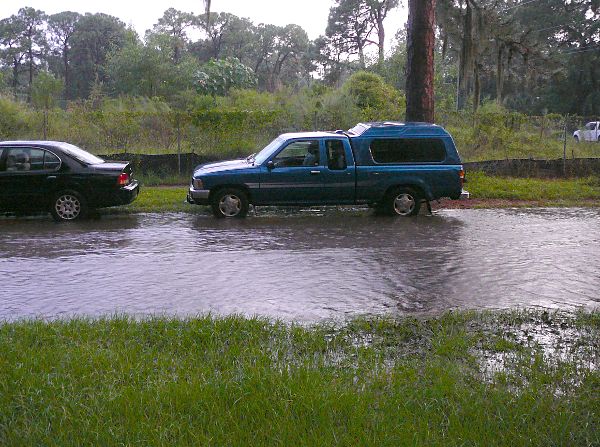
And here was the intersection near our house
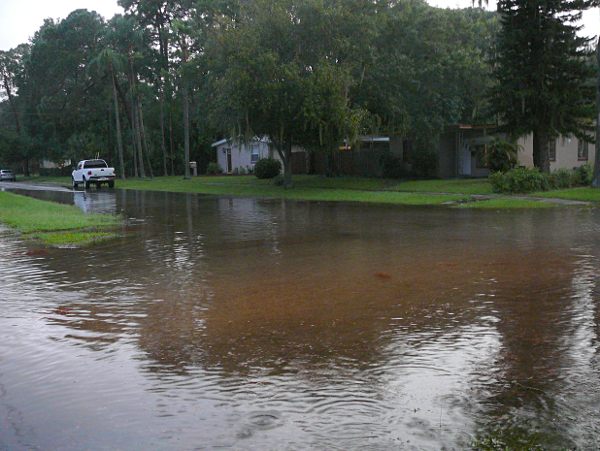
But the soil is very sandy and this all drains away quite quickly. This is what it looks like normally
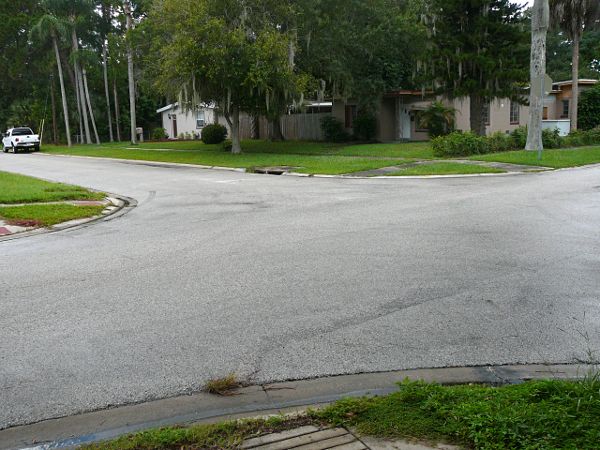
That intersection has three, maybe four, storm drains, all large enough to lose litters of puppies in
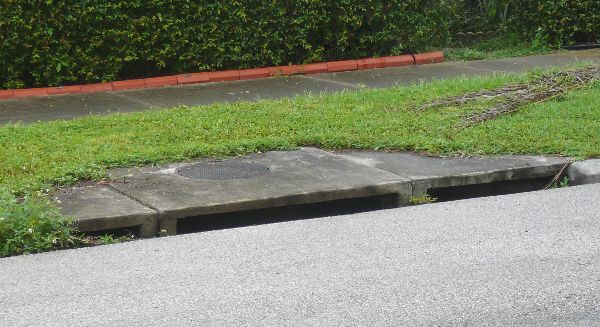
Friday, September 25th, 2009
These were taken at Sawgrass Lake Park.
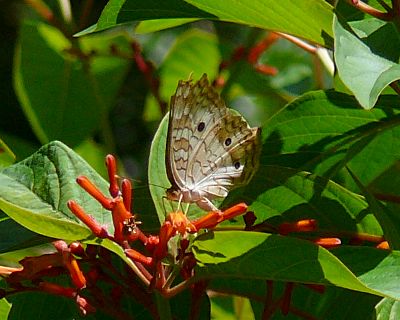
There were so many butterflies on this bush, mainly bright yellow ones, but they were so flitty and refused to stay in place for a picture. This is a white peacock, slightly worse for wear.
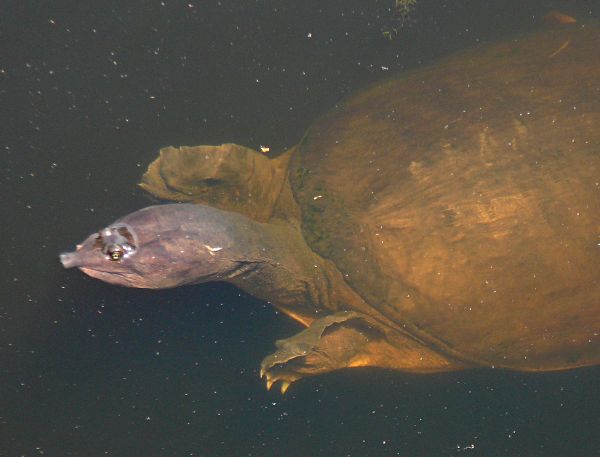
We saw several soft shelled turtles. They have odd little tubular noses, which lower their cuteness factor significantly in my opinion.
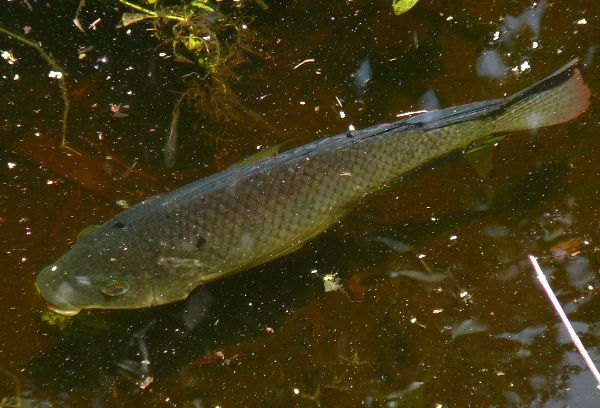
These tilapia (which looks generically fishy to my untrained eyes) flash pink from their lips when they snap at food.
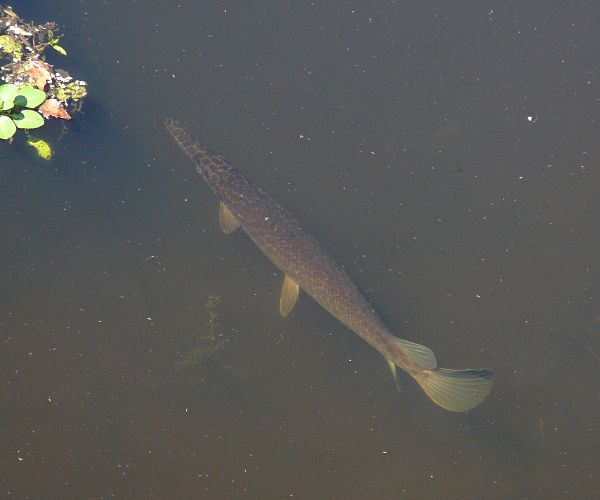
While not looking generically fishy, we couldn’t figure out which breed of gar these were. Gar can breathe by gulping air, probably an asset in the slow moving water at this park.
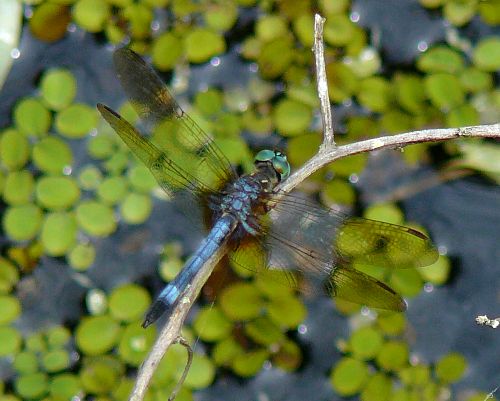
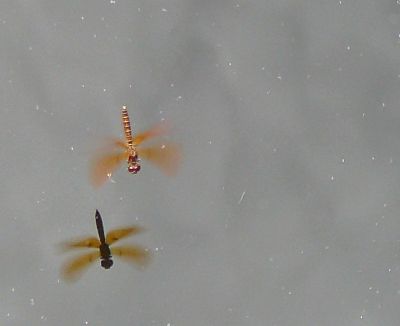
My guess is that the top is a great blue skimmer and the lower is an eastern amberwing, but dragonflies are harder to identify than butterflies. There was also a really cute catfish flipping about in the marshy area. It would poke its little barbels out and then duck back under the surface far too fast for a picture, though.
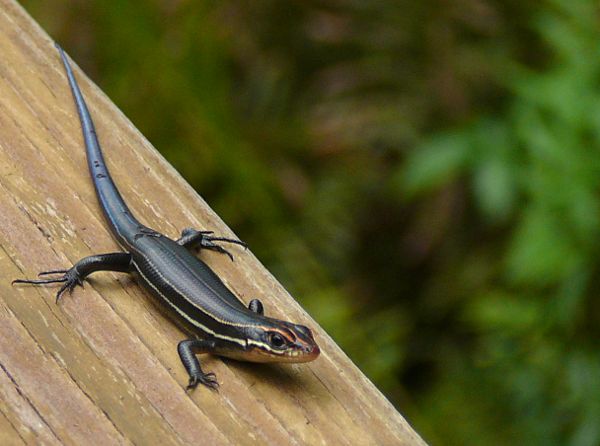
I wish more of my pictures turned out like this skink.
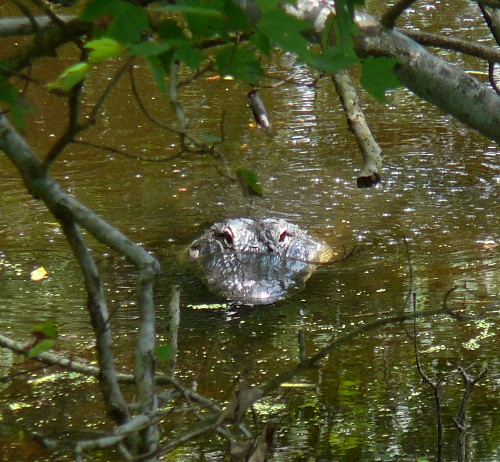
The difference, far away, between an alligator and a log is that at the correct distance away from the main protrusion is a much smaller break in the water surface for their nose.
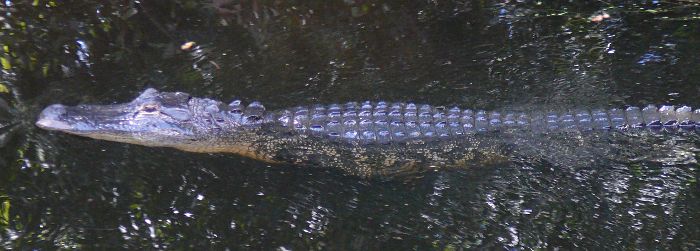
They swim entirely with their tails, their feet tight against their body. One long line of chompy.
Tuesday, September 15th, 2009
This review (found by Mike) was far more coherent than the book it was reviewing, Unscientific America: How Scientific Illiteracy Threatens Our Future by Chris Mooney and Sheril Kirschenbaum.
I checked out the book from the library because I really liked this excerpt, of which my favorite thought follows: (ex-excerpt)
The anti-vaccination advocates are scientifically incorrect; there’s little doubt of that at this point. But whether they could be called “ignorant†or “scientifically illiterate†is less clear. After all, they’ve probably done far more independent research about a scientific topic that interests and affects them than most Americans have.
Now I find this a really intriguing quandary. You ask any crank who believes the opposite of your views, and they’ll generally have reasons, well thought out or less so, but reasons, and usually some numbers or ratios that support their ideas. These numbers may very well be wrong. But numbers! They spouted numbers!
And the thing is, it’s very hard to have that good of a grasp of which numbers are actually correct and significant. It takes a lot of research, a lot of time invested, to learn the jargon of a particular field, and then learn what ideas are well understood and agreed upon by the experts, and which are not. You need that kind of context to be able to weigh outlier opinions and determine whether they express ignorance of facts obvious within the field, or whether they bring up criticisms of ideas that really haven’t been fleshed out, or weaknesses that have been revealed with recent events. The huge majority of people don’t have that kind of understanding.
This book doesn’t profess that we should get everyone to that level of knowledge (which I agree would be impossible), but it also doesn’t have any suggestions on how to differentiate between the cacophony of claims. Ok, so they could have gone in several directions, but while the authors fault “deregulation and decades of mergers [in the media]…. cutting down on substance and quality” and “programming to the least common denominator,” I failed to find any content in their own work. Challenge your readers, dammit, or at least don’t waste their time. I gave up after chapter two and only skimmed the rest.
Maybe it was a problem of not having a target audience. This book is not a book about science and it tries very hard not to alienate the public; there are no big or field-specific words. But it also takes as a given the scientific findings on those exact topics where alarmingly large portions of the public have gotten it wrong. More broadly, I saw no discussion about critical thinking and why we’re so bad at it, or the interplay between fact and myth, or the psychological or evolutionary reasons why we mistake the two, and only a brief mention of how the rest of the world manages with educating their unscientific masses. It’s not even about the threats in our future and how to meet them as a culture, nor did I find any suggestions on how to make the ideas and process of science more interesting and relevant to the public. Just, resurrect Carl Sagan and get out there in the public eye:
We must all rally toward a single goal: Without sacrificing the growth of knowledge or scientific innovation, we must invest in a sweeping project to make science relevant to the whole of American’s citizenry.
It does not bode well in keeping the attention of the masses when you can’t even engage and interest receptive readers that agree that we have a genuine and significant problem on our hands.
Saturday, September 5th, 2009
In our previous visit we ended up in the southern boardwalks of Weedon Island. This time we were in the northern half. These were taken on Aug 22.
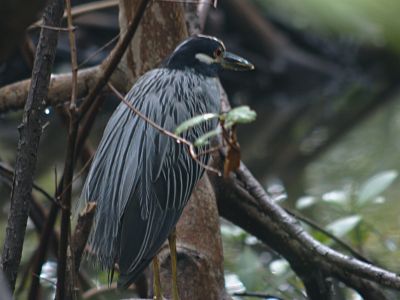
Mike noticed this yellow crowned night heron. None of my pictures turned out particularly well, but it’s a cool bird, and not as commonly seen as great blue herons (this is my second sighting. The first was at Caledesi Island in December.)
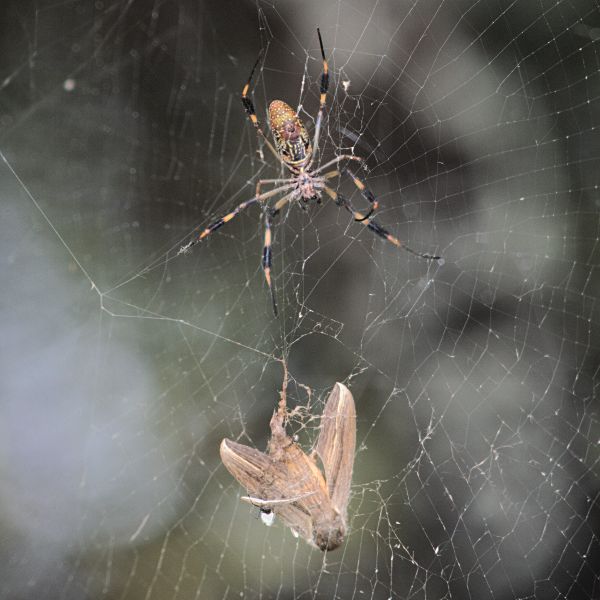
More death pictures! This is a golden silk spider. Mike, and other people, call them banana spiders. The legspan on the females is 3-4″. This is the first time I’d seen one, but they were all over the park this visit. Their bite is not lethal, but I’d still rather not run into one of them.
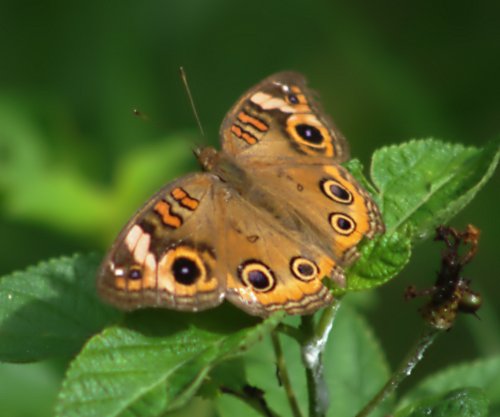
Common buckeye butterfly that was flitting along with us. We also saw a zebra longwing, but my only picture of it was unsightfully blurry.
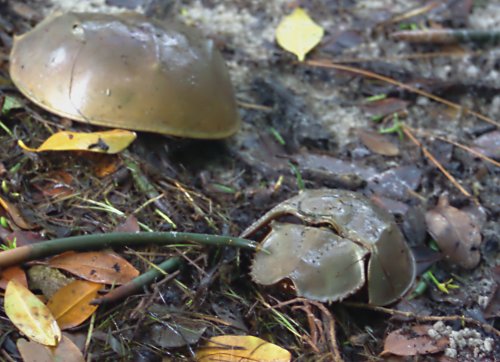
I’ve yet to see any live ones, but these are the shells from horseshoe crabs, which are actually distant relatives of spiders, and have been around for 445 million years.
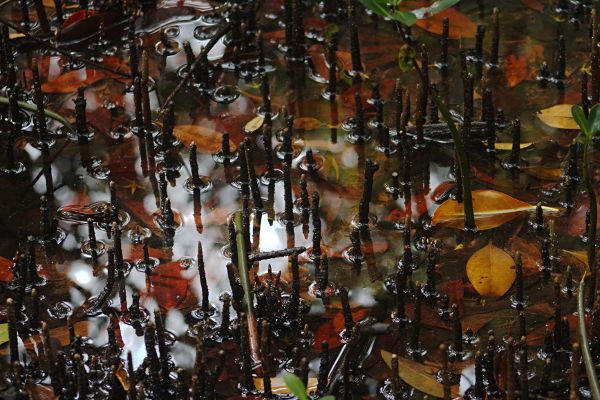
These are mangrove roots poking up from a pool of water, for breathing I think. You can see a few of the magrove seeds, in this and the horseshoe crab picture. This was a cool anecdote from wiki:
Mangrove seeds are buoyant and therefore suited to water dispersal. Unlike most plants, whose seeds germinate in soil, many mangroves (e.g. Red Mangrove) are viviparous, whose seeds germinate while still attached to the parent tree. Once germinated, the seedling grows either within the fruit (e.g. Aegialitis, Acanthus, Avicennia and Aegiceras), or out through the fruit (e.g. Rhizophora, Ceriops, Bruguiera and Nypa) to form a propagule (a ready-to-go seedling) which can produce its own food via photosynthesis. The mature propagule then drops into the water which can transport it great distances. Propagules can survive desiccation and remain dormant for over a year before arriving in a suitable environment. Once a propagule is ready to root, its density changes so that the elongated shape now floats vertically rather than horizontally. In this position, it is more likely to lodge in the mud and root. If it does not root, it can alter its density and drift again in search of more favorable conditions.
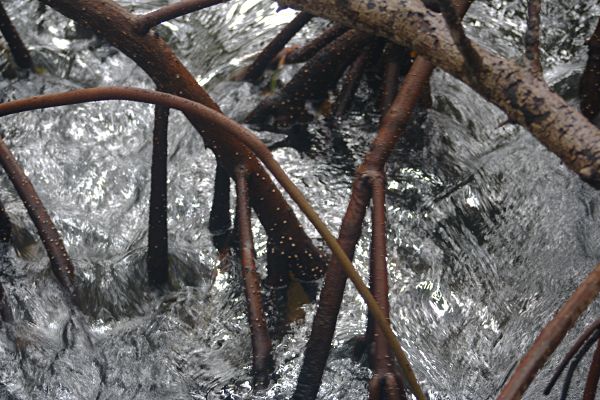
More mangrove roots. Usually the water around mangrove roots isn’t moving this fast. I think the little bumps on the roots are lenticels, also for breathing.
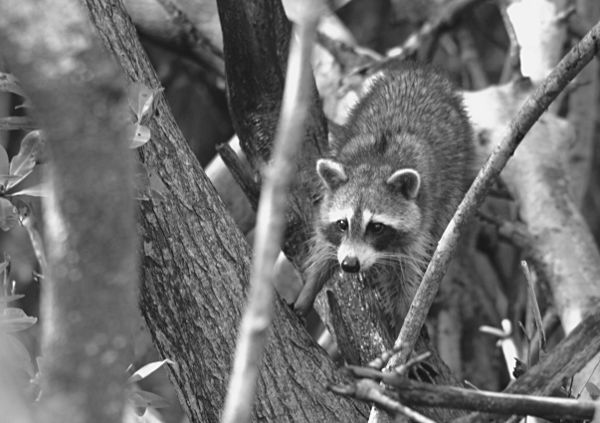
We saw at least 4 racoons. The first two ran away fairly quickly, but the others were alarmingly tame.
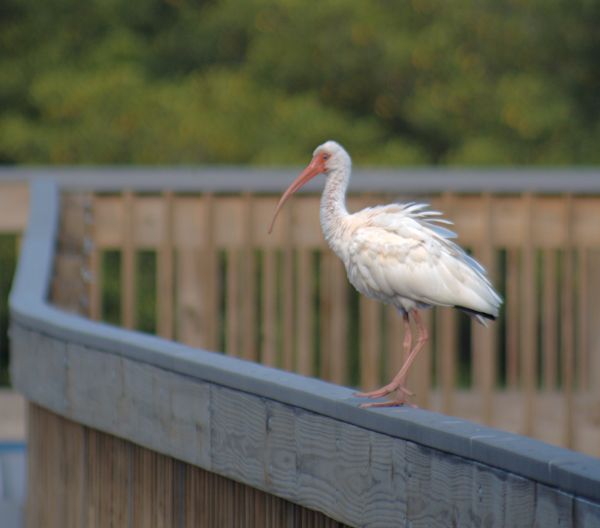
Mike took this one of a white ibis. It turned out way better than any that I took. Then we ran out of camera batteries. On the platform behind the ibis we watched a large school of jumping mullet.


